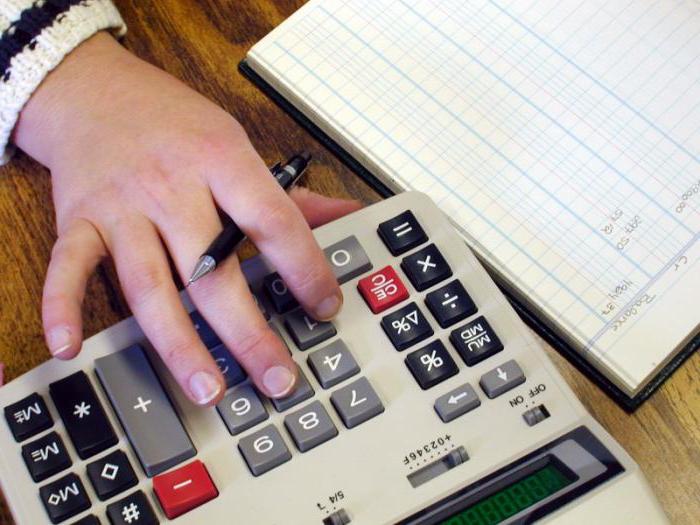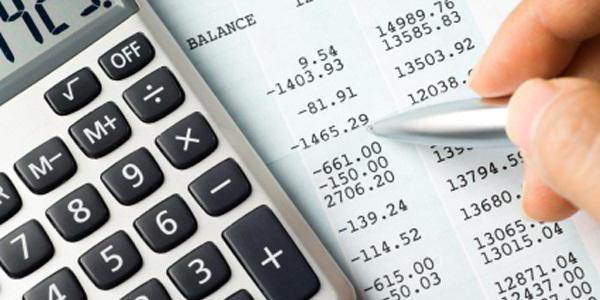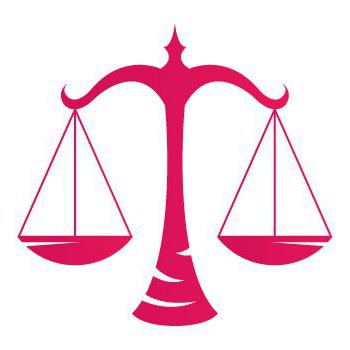The cash method of accounting for income and expenses is a method in which the income of an organization is taken into account on the day when the money arrives at the cash desk or to a current account. For various kinds of enterprises and organizations in our country, several methods have been developed and put into effect that take into account income and expenses. They apply to taxation of business entities. Since 2002, organizations can use two methods to calculate income taxes.
Today we will talk specifically about the cash method of accounting for income and expenses, about its pros and cons. Most often it is used by companies with a small turnover and, accordingly, a small revenue. The accounting policy of the company is the basis on which the accounting service is based. Therefore, the choice of the cash method of accounting for income and expenses should be taken very seriously in order to eliminate future friction with fiscal authorities.

Income of the organization: essence and classification
In accordance with applicable law, the name "income" means the profit of a company of any kind. Profit is calculated in value terms in two different ways. You can use either the cash method of accounting or the accrual method. There are also payments to the budget of the company, which are excluded from the revenue side and are not taxable.
Such payments include indirect taxes, which are an expression of the added value of the goods that the buyer pays for the purchase. The income part of the organization is determined by analyzing the primary and tax accounting documents, as well as those that are confirmation of the transaction. In other words, income is systematized for a taxable group and those that are not taxable. These are methods for recognizing income and expenses.
Profit as an object of taxation
It is not a secret for any accountant that the formation of net profit occurs by deducting mandatory contributions from the total revenue. This remaining amount is subject to accounting by one method or another. The amount received is subject to taxation if:
- Cash should be received as a result of the sale of goods or services.
- Revenue will be deemed received even if it is presented in kind and not in the form of money.
The cash method of accounting for income and expenses is now being used more and more often. The type of income that is considered non-operating and is accounted for as a result of operating activities is not subject to taxation. These include various units, deposit interest, exchange rate differences, fines and penalties. Such payments in favor of an economic entity, such as contributions to the authorized capital, repayment of loans, payment for leased property, are also not taxed. What takes into account the cash method of accounting for income and expenses?

Costs: nature and classification
When we talk about costs, many start-up entrepreneurs believe that for any transaction costs, taxable profits will be significantly less. However, this is not quite true. The costs of the enterprise are expressed in value form and calculated in any way that is convenient and does not contradict the law (for example, the one we are discussing - cash).
By the amount of this amount, you can reduce the pre-tax revenue. However, there are operations that cannot be taken into account for the gross result.In this regard, the costs should be adequately justified, confirmed with the help of documents and, of course, they should be directly related to the main activity of the enterprise. The use of the cash method of accounting for income and expenses has many advantages.
How are expenses charged?
Each type of spent funds in the tax authorities must be documented:
- If this is the cost of a business trip, advance reports are required with supporting documents, receipts for housing and transport.
- Transportation costs are confirmed by waybills, acts reflecting the reception and transfer of services rendered.
- To confirm rental payments, it is necessary to provide settlement documents confirming payment, contracts, acts of acceptance and transfer.
- Payment for mobile communications is confirmed by contracts, orders for use, detailed accounts, a list of employees whose expenses for mobile communications are paid by the company.
- When operating official vehicles, it is necessary to issue waybills.
- The costs of acquiring drinking water should be confirmed by a certificate from the sanitary and epidemiological authorities that the local tap water is unsuitable for drinking, and settlement documents. With the simplified tax system, accounting for income and expenses on a cash basis will be very convenient.

What are the costs?
So, all expenses are documented. Now you need to calculate them using any method. In our case, we will use the cash method of accounting for income and expenses. But before that, costs are subject to classification. At the same time, we must remember that even in the absence of profit at the enterprise, expenses can still be. For this reason, expenses are allocated.
At the same time, the revenue part is not taken into account (since this is not always possible), but taken into account in accordance with another classification. There are not so many varieties of expenses, only two: those that are taxable, and non-taxable, the so-called others. The cash method of accounting for income and expenses in the simplified tax system in 2016 was used by many entrepreneurs.
Company expenses as an object of taxation
To determine the amount of revenue using the cash method of calculating income. In the absence of such in the balance sheet, calculating the financial results of the enterprise, you need to pay attention to the expenditure side. As we recall, according to the current legislation, it is taxable and non-taxable. The taxable list of expenses includes: production and sales costs, material or raw materials costs, labor (staff salaries), depreciation expenses, etc.
Costs that are not taxed are also called standardized. Their list is regulated by tax legislation. This list may include shortages, hospitality expenses, as well as compensation for personal expenses of staff if someone was sent on a business trip. Let us consider in more detail the use of the cash method of accounting for income and expenses.

The nuances of using
The basis is the arithmetic average, which is calculated for the entire reporting period in its entirety and takes the size of net profit for a constant value. Such, according to the explanations of the fiscal service, should be less than 1 million rubles per quarter. This is less than four million rubles per year. In what proportion this amount will be distributed, the entrepreneur decides.
Therefore, it will be entirely justified if the businessman in the first months will not make a profit at all, and in the future it will amount to two million for each reporting period. We give a clear example of the cash method of calculating income and expenses. So, a certain company has been using this method since January 1 of this year. At the end of the third quarter, the accountant checks whether the company meets the conditions under which the use of this method is legal. The revenue is:
- for the 4th quarter - 400 thousand rubles;
- for the 1st quarter - 800 thousand rubles;
- for the 2nd quarter - 1 million rubles;
- for the 3rd quarter - 500 thousand rubles.
We will try to calculate whether the company will be able to continue to use the cash method of accounting: add up the revenue for four quarters and divide by four.
(500 thousand rubles + 800 thousand rubles + 1 million rubles + 400 thousand rubles): 4 = 675 thousand rubles.
It turns out that the average revenue for the year did not exceed one million rubles, and the company has the right to continue to use the usual method for calculating the tax base. Who can not use the cash method of accounting for income and expenses?
For whom the use of this scheme is excluded?
Cash method has a number of disadvantages. Firstly, as already mentioned, there is a limit on the amount, which makes it impossible for large business entities with an average revenue of more than one million rubles to use this scheme. There are a number of institutions that cannot use this accounting method.
The Tax Code establishes that this method of recognition of income and expenses is not possible for a number of organizations: financial institutions engaged in banking activities, business entities participating in joint business management in accordance with the concluded trust management agreement or entering into a simple partnership. More specifically, the list of these enterprises will look like this:
- Credit consumer organizations.
- Microfinance firms and banks.
- Companies with registration in the territory of another state.
- A number of organizations licensed in the field of subsoil development.
- Organizations operating on the basis of agreements aimed at the trust management of property. And all the rest with the simplified tax system, they can carry out cash and income accounting.
Cash accounting
If the business entity has chosen this particular method of accounting for income, then it must show this in the current accounting policy of the organization and follow it later. The entrance part of this calculation method has a number of features defined by applicable laws. Therefore, their observance is mandatory for any organizations and institutions that are allowed to use this method in accordance with the provisions of tax legislation. These features include the following points:
- The date on which the money will be credited to the bank account of the enterprise is considered the day the money is received.
- The above condition applies to any work and services of a non-property nature.
- If the organization provides loans to someone, then their repayment is reflected on the same day in full. Agree, the cash method of accounting for income and expenses in accounting is very convenient.
Simply put, the cash basis method is based on operations carried out in fact. In all other cases, proceeds in favor of the organization are not recognized. In addition, when calculating the organization’s revenue, it is necessary to remember the following: the export duty is not presented by the seller to the buyer of the goods and must be taken into account when determining the amount of revenue. And the cost of excise taxes, which is included in the price of goods sold to the buyer, will be excluded from the company's revenue. These are the main methods of recognition of income and expenses.
Cash costs
As is clear from the previous paragraph, the costs of this form of accounting will be taken into account only if their implementation is documented. In the expenditure part of the balance sheet in accordance with cash accounting, confirmation of expenses is only the fact of direct payment. This means that this method of calculating the tax base does not take into account those payments that were made as an advance for the goods, but were not fully completed. In this case, the funds will be recorded in the financial result by the date on which the shipment of the goods took place in accordance with the contract.
There are a number of nuances to consider. For example, salary costs, raw materials costs, as well as interest accrued for the use of credit funds should be calculated immediately after payment. The cash method of recognition of income and expenses is now popular among young entrepreneurs. At the same time, the organization has the right to reflect the price of materials and raw materials only after writing them off into production.
Once again we repeat that, in accordance with the law, the use of the cash method is allowed for entrepreneurs and legal entities whose total income for the reporting period does not exceed one million rubles. However, the law does not say that profits should be like this every month. Just this limit should be obvious in the average annual calculation. It is necessary to pay attention to the fact that the use of the cash method in the accounting practice of enterprises and firms paying income taxes is a voluntary act, but not a mandatory requirement.
For the same organizations and individual entrepreneurs that use simplification, it is mandatory to use the cash method of accounting for income and expenses. You can go to it either directly when registering an organization or individual entrepreneur, or, if the company has existed for a long time, with the beginning of a new calendar year. The organization, which switched to the cash scheme, in the future will have to control the amount of profit, and in addition, observe a number of certain restrictions on the contracts. But we must remember that not all can use the cash method of accounting for income and expenses.

Circumstances affecting the possibility of using the cash method of accounting
The occurrence of certain situations, for example, if the organization has ceased to meet the requirements established by law, necessary for the application of the discussed method, leads to the fact that the company must abandon it. If such circumstances arise, the organization shall, at the beginning of the next tax period, proceed to the accrual method.
Restrictions on the rights to use this accounting option occur if the company is a simple partnership or it has an agreement aimed at trusting property. You will also have to switch to the accrual method if income has exceeded the limit. So, what is the bad and good accounting of income and expenses on a cash basis?
Advantages and disadvantages
A positive point when maintaining the cash basis is that only paid revenue is included in the taxable income. The disadvantage of this method is clearly visible when accounting for costs. Reduce with their help the taxable part of the profit is possible only after the actual payment of costs. In most cases, the company does not have time to pay them during the reporting period. Such expenses are a fairly extensive list. For example, wages for the last month in a quarter are paid in the next quarter.
The same can be said of rent. And if expenses are not subject to accounting in this period, the company will be forced to inflate tax payments on profits. It is not always advisable to use the cash method of accounting for income and expenses under the general assessment of expenses. It is these circumstances that become a stumbling block for many companies, and they abandon the cash method of accounting and turn to the accrual method. In this case, the taxable income of the company reduces any expenses, whether they are paid or not. But the accrual method also has its own fly in the ointment: all revenue is taken into account in revenue, regardless of the fact that the buyer did not pay for the goods or service sold.
As a result, you have to pay tax even when the money has not yet been received in principle. This is not always possible, as the company may simply not have free funds to make payments to the budget. If there is a delay in payment, the company also loses additional money in the form of a fine.When using the cash method of accounting, the advance received by the entity is recognized as taxable income. This is also a minus of the cash method of accounting. Therefore, special attention should be paid to prepaid companies at this point. It is more profitable for them to use the accrual method.
And those enterprises and organizations that receive payment only upon the transfer of goods to customers can use the cash method. For them it will be more profitable, because it allows you to pay taxes only on paid profits. To summarize, we can say the following: when choosing a method of accounting for income and expenses, it is necessary to carefully weigh the pros and cons, which we described in this article, and come to the most favorable solution for you and your business. Learn the cash method of accounting for income and expenses, and your company will flourish!